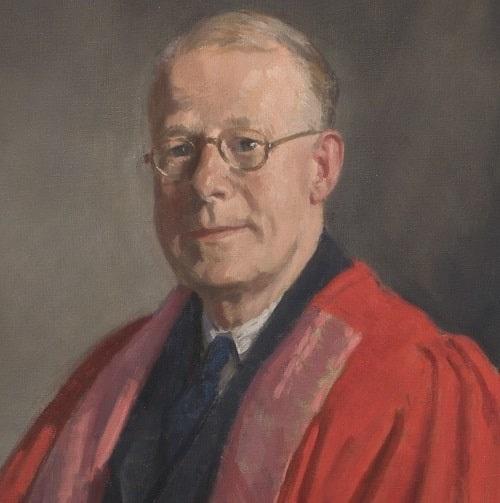Geoffrey Jennings was the son of Sutcliffe Hales Jennings, a master at Christ’s Hospital. He and his younger brother Tom were born and educated at the school near Horsham in Sussex where their father worked. Geoffrey was a foundation scholar at Corpus Christi College, Cambridge, and subsequently a Harmsworth scholar at St Mary’s Hospital medical school, London. After house posts at St Mary’s, the Brompton and Bolingbroke Hospitals, and at the Evelina Hospital for Children, he was appointed medical registrar at St Mary’s Hospital in 1933. In 1935 he became first assistant to the medical unit at the British (now Royal) Postgraduate Medical School and from 1933-37 he was also clinical assistant at the National Heart Hospital.
In 1938 he was appointed physician to the then Middlesex County Redhill Hospital, Edgware, a post which he held until his retirement in 1970. He remained in civilian medical practice during the war years on account of his many responsibilities at Edgware - resident administrator, general physician and paediatrician.
In the postwar years the need for full-time paediatricians was increasingly recognized. Geoffrey, who was by nature a very conservative man, at first opposed such a change at Edgware. But despite this opposition a full-time paediatrician was appointed in 1945; she was Margaret Doreen Baber. To the delight of all who knew them, this initial opposition changed gradually to friendship and in 1950 to matrimony. To their sadness, they had no children.
In 1948, with the advent of the NHS, Redhill Hospital became the Edgware General Hospital. With this change came a great increase in the activity of the hospital and a corresponding increase in its staff. Geoffrey had perhaps had enough of administration in his early years at Edgware and from then on he played a diminishing role in this sphere but gave generous support to those who took it on.
His interests m medicine were prolific and diverse. One of his first papers, in 1938, was on the subject of temporal arteritis. It was believed to have been the first paper on this subject to appear on this side of the Atlantic. Among his many other papers were articles on dysphagia, coronary artery disease, virus encephalomeningitis, the treatment of gout with salicylates, thrombocytopaenia in industry and the cause of haematemesis and melaena.
Geoffrey’s interests in the arts was wide. He wrote four opera libretti - one of which, based on Trollope’s Barchester towers, was set to music by David Spence Lyons. He also wrote poetry, some of which was published in The Field. He was an expert on and a great lover of opera, with a particular liking for those of Verdi. He enioyed painting in water colours and exhibited regularly in the Medical Art Society’s exhibitions.
In his youth he was a good rugby player and successively played for his school, college and hospital, and for the United Hospitals. He was also a good cricketer, being captain of his school and college Xis, and once playing 12th man for the Sussex County XI. Unfortunately, these activities predisposed to arthritis, particularly in his knees, and in later years he was much troubled by this affliction.
After their simultaneous retirement, Geoffrey and Margaret moved to a delightful country cottage in Northchapel, Sussex, near to his birthplace Horsham, where they enjoyed the pleasures of retirement -such as gardening, albeit with much difficulty and discomfort, watching village cricket and seeing many friends and erstwhile colleagues. Sadly, their disabilities increased and in 1988 they moved again to live near Margaret’s sister in Pontypool, South Wales. It was here that Geoffrey died. His wife survived him.
Geoffrey Jennings will be remembered by all who knew him, including a host of patients, for his great kindness, his wide interests and achievements, and his high intelligence. He latterly came to see himself as being ‘old fashioned’. And so to an extent he was but all who knew him well and were influenced by him were perhaps the better for this quality of his.
G S C Sowry
[Brit.med.J., 1993,306,266]

